Description of paulownia felt and its cultivation
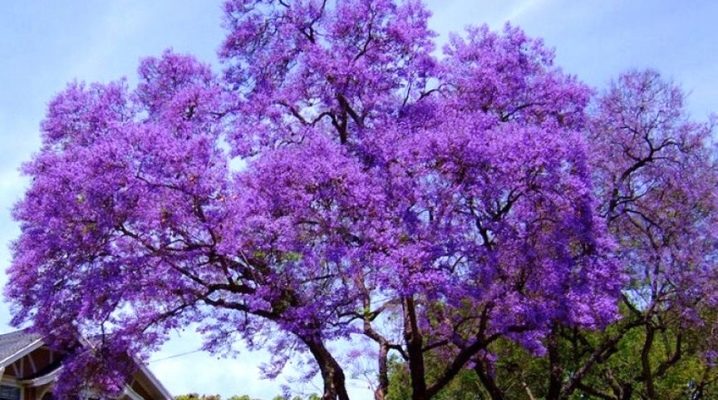
Felt paulownia is an amazingly beautiful tree. Only 2-3 of these cultures are able to change the appearance of the site, making it look like a piece of paradise. And this tree also releases nutrients into the air that cleanse the lungs and strengthen overall health.
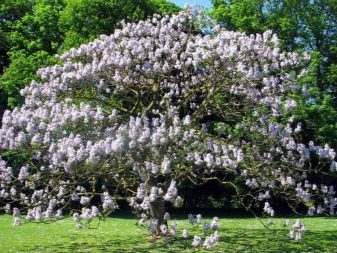
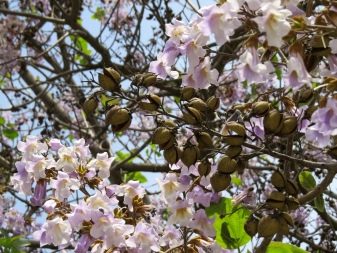
Description
Paulownia felt belongs to the Paulownia family... Previously, it belonged to the norichnik family, but was later assigned to a different category, since all other plants in this group are herbs. Botanical name of culture - paulownia tomentosa. Another name is Adam's tree. The culture grows in Japan and China, is widespread in tropical regions.
The tree is deciduous, very beautiful. The height ranges from 6 to 25 meters, depending on the place of growth. The trunk is straight, strong, developed. The root of the tree is branched, going deep into the ground, which allows the culture to easily survive periods of drought. The trunk diameter is about one and a half meters.
The bark on young trees is green, but over the years it begins to turn brown.
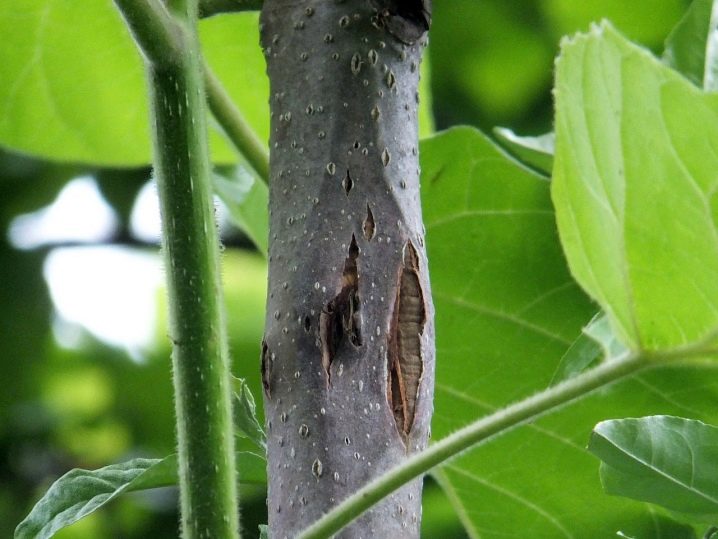
The foliage of the plant is very large, heart-like in shape. The plates have a rich emerald color, as well as a slight gray pubescence on both sides. Stipules are long, strong, bright green. The size of the foliage is about 20-25 cm, but this is only in the native places of growth. Surprisingly, the leaves of a culture growing in Russia can reach half a meter in length.
The flowering of the plant takes place in the spring, it is quite long - about 45 days. During this period, the tree is especially decorative. Paniculate inflorescences are similar to bells, most often they have a delicate lilac color. The middle has a yellow tint.
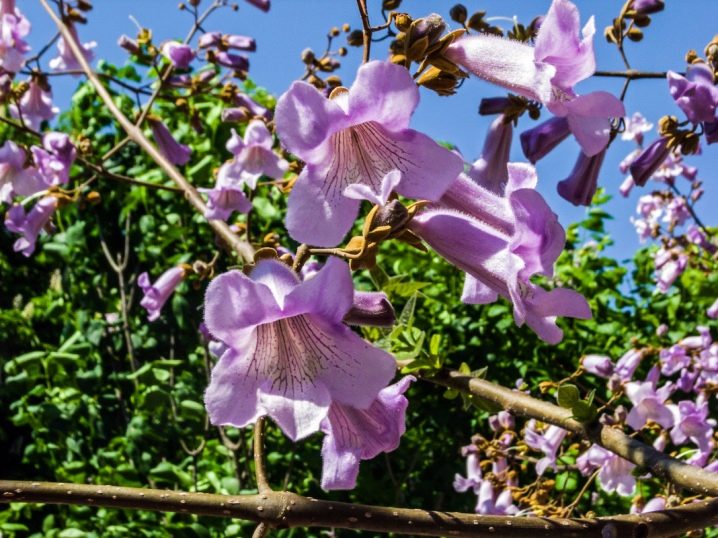
Flowers bloom on the upper parts of the shoots, and this happens even before the foliage opens. The aroma of the flowers is pleasant, spreads for several meters. When flowering comes to an end, fruits with seed pods will appear on the tree. When the grain is scattered, it will be blown away by the wind.
Paulownia has very poor winter hardiness. This is a tropical tree that will definitely not survive, for example, in the Siberian zone. It makes no sense to cultivate it there. In central Russia, frost resistance is enough so that the roots do not freeze. The trunk freezes completely. And since buds with flowers are formed on the shoots of the past season, the tree, of course, does not bloom in the areas of the middle lane.
The only areas suitable for cultivation are in the south. These are the Black Sea coast, Kaliningrad region, Crimea, Caucasus.

Application
Felt paulownia is used not only in landscape design... Due to the fact that it is very beautiful, as well as soft and pliable wood, it is often used to create musical instruments. Due to the ease of processing, this type of wood is widely used to create equipment for sports. For example, strong and lightweight skis come from paulownia.
Another area of application is ship construction. Parts of the tree are used to build boats, yachts, ships. They make surfboards. In addition to ships, paulownia wood is used to create individual samples of furniture, handicrafts, and souvenirs. With good care, such things will last a very long time due to the fact that they are never affected by woodworm beetles. In Japan, even houses are built from Adam's wood.

In addition, live trees can be used with success. Paulownia grows very quickly, the roots penetrate deeply into the soil layers. It contributes to the health of the earth... For several years, such a tree is able to restore the soil damaged by fire. Roots pull heavy metals from the ground, cleanse it.
Due to the large-fruited foliage, the plates that fall to the ground quickly rot and become fertilizer for the soil, increasing its fertility. Foliage also contains a lot of protein, and it is not uncommon for gardeners with livestock to include the leaves in the diet of animals. Those plates that still grow on trees clean the air well from harmful impurities. Flowers and bark are used in medicine and cosmetology.
Paulownia gives a lot of root growth. It is often used to make fuel briquettes. Cellulose is also made from the wood of the culture.

Growing conditions
As already mentioned, paulownia is felt takes root only in regions with a warm climate... Of course, it can be grown in the middle lane, but then the tree will not bloom. But the leaves can still be used for fertilization, and trees for soil health.
In addition to warm temperatures, the plant needs protection from drafts. For this reason, they are planted in areas where there are any buildings, other tall trees. The landing site should be sunny, open. Up to 2-3 years, trees grow well in semi-shaded areas, then they need a lot of sun.
In the wild, paulownia grows on almost any type of soil. But at home, it is better to pick up fertile loose soil. Plants prefer sandy soils with little gravel content. Heavy soils will not work: paulownia will often hurt in them. The earth must be slightly acidic. As for groundwater, it is better to choose a site where they will lie deep.

Sowing seeds
Beautiful and healthy Adam's trees can be grown from seed. The seeds are collected independently from the seed pods. They form on trees in the fall. It is very important to choose the right time to collect, because the capsules can burst, and the seeds will scatter throughout the area.
It is not recommended to store the collected material for a long time. After six months, the seeds will no longer sprout.
First of all, the material is checked for germination by pouring warm water. For planting, only those seeds that have sunk to the bottom are suitable. Then they should be germinated. To do this, you can use one of the methods below.
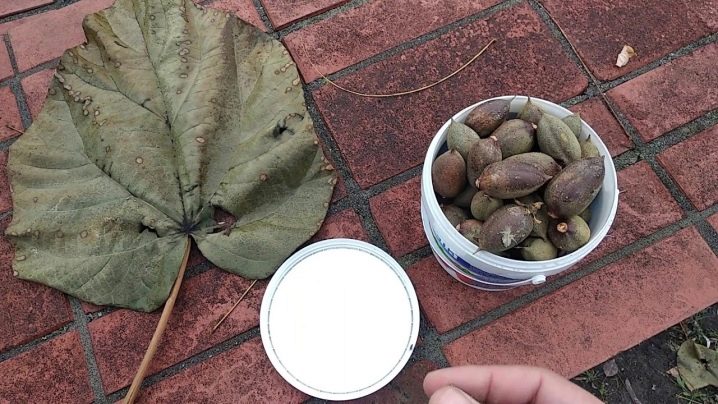
Napkin
You will need a small plastic container and a regular napkin. They put it on the bottom, moisten it. Then spread the seeds, spray again. The container is closed and placed in the refrigerator in the area where the temperature is from 0 to +5 degrees. After 2-3 days, the container must be removed and placed on a window sill illuminated by the rays of the sun. Here she must stand for 10 days.
Every day, the lid is opened to let air in to the seeds. When sprouts appear, you will need to immediately transplant the seeds into the ground. The best choice would be a mixture of sand and peat. The seeds are placed neatly over the surface of the substrate, without deepening. Sprinkle with earth, spray from a spray bottle. A similar sowing option is carried out in the fall, then at the beginning of summer you will already have full-fledged seedlings for planting in open ground.
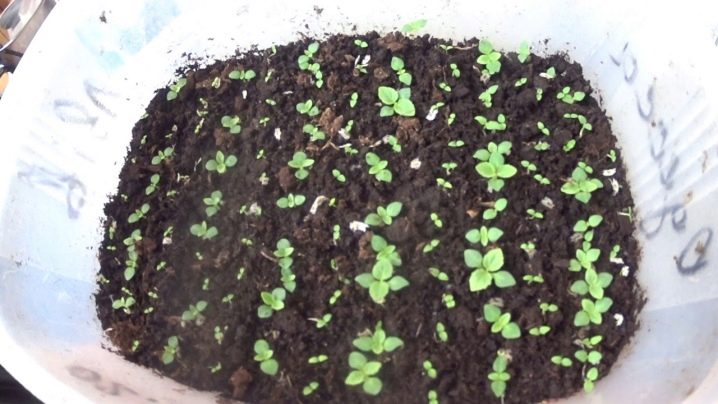
Direct seeding
With this technique, a pot is taken immediately. Next, the same substrate is poured there as in the previous case. Watered very abundantly with water - so that the mass becomes viscous. Next, the seeds are spread on the surface, and the pot itself is tightened with polyethylene.
Every two days the film is opened so that the seeds can breathe. They will germinate in about 10 days. When they appear, the film will have to be removed every day for a quarter of an hour. Gradually, the withdrawal time should be increased.
When the seedlings grow up and acquire 3 leaves, they will need to be planted in separate containers.You can pick up large pots right away as the plants grow very quickly.
In the spring, they can already be transplanted to a permanent place.

Care
To plant paulownia, you need a hole 0.6 meters deep. The diameter should have the same dimensional parameters. This is true for light sandy substrates. On loamy soils, the pit size and depth should be one meter.
The bottom of the planting hole is filled with soil from the garden, mixed with peat moss. The seedling is placed strictly in the middle, covered with earth, leaving the root collar on the surface. Water well.
When planting, it is important to consider that the trees will grow. Therefore, the optimal layout will be 4x4 meters.
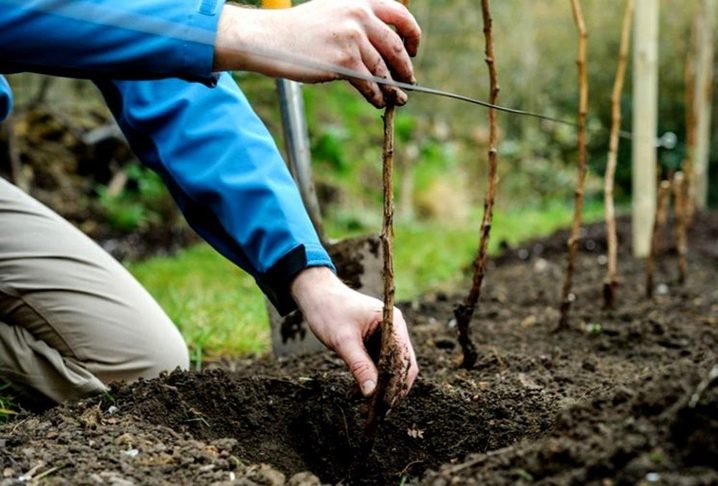
Paulownia felt is a drought tolerant tree, but that doesn't mean watering can be ignored.... On the contrary, you need to pay special attention to them if you want the tree to grow faster and begin to perform its useful functions. Watering is carried out as the soil is irrigated. During dry hot periods, they are carried out twice a week. This regime is also adhered to for seedlings 1-2 years of life in normal conditions.
It is necessary to water the plants in a near-stem circle from a bucket or hose. You can dig grooves around the perimeter for this. But drip irrigation will be harmful here. It will stimulate the roots to rise up, which is not very good, because such a tree, even in adulthood, will not be able to properly extract water from the soil.
As for the quantity, young seedlings will require 10 liters per week, which can be divided by 2 times. Adult specimens are watered every 2 weeks, using about 2 buckets of water.

Fertilizers for paulownia are optional. But if you want the tree to acquire a juicy green color and quickly grow foliage, you can feed it with nitrogen, for example, urea, in the first year. All dressings are served in liquid form with watering. In the future, the tree will positively respond to the use of chicken, crushed peat, vermicompost.
In order for all fertilizers to penetrate well into the soil, it must be drained and loose. To do this, several times per season it is plowed with a garden ripper, but not very deeply, especially in the case of young trees. Cleaning the weeds from the trunk circle should be carried out regularly.
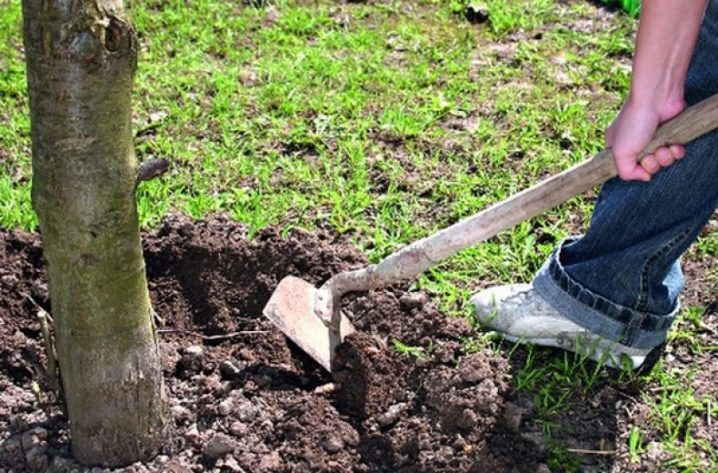
Cropping deserves special attention.... Some gardeners generally do not carry out shaping haircuts, settling only on sanitary ones. The crown is already formed beautiful and spectacular. But if you want to get a tree with a perfectly straight trunk, then the next fall or spring, after planting, they carry out technical pruning. She means cut the tree in such a way that the stump is no more than 3 centimeters. The place of the cut is required to be treated with a garden pitch.
The next year, part of the foliage is removed from the plant - so that it remains only in the upper part of the crown. Then, for several years in a row, gardeners will only have to uproot the shoots in the near-trunk circle and cut off the branches growing below. At the age of 8, the tree is cut down again. So it will constantly rejuvenate and bloom beautifully.
The life span of plants is about 100 years.

Reproduction
This procedure can be carried out using several techniques. We have already considered the seed method, now is the time to dwell on other options.
- Cuttings... They do it in August. Several strong shoots are chosen, the tops are cut off from them. The stalk should be about 6-8 cm. The tip is treated with a growth stimulant, then the stalk is planted in a pot with a loose nutrient substrate so that it rises 2 centimeters above the soil. It is covered with a cut plastic bottle on top. It is not difficult to take care of the plant, you just need to moisturize and ventilate it in a timely manner. Shoots that have reached a length of 0.1 m need special attention. It is necessary to leave only 1 strong shoot, cut off the rest. The next spring, the seedling is transferred to a permanent place.
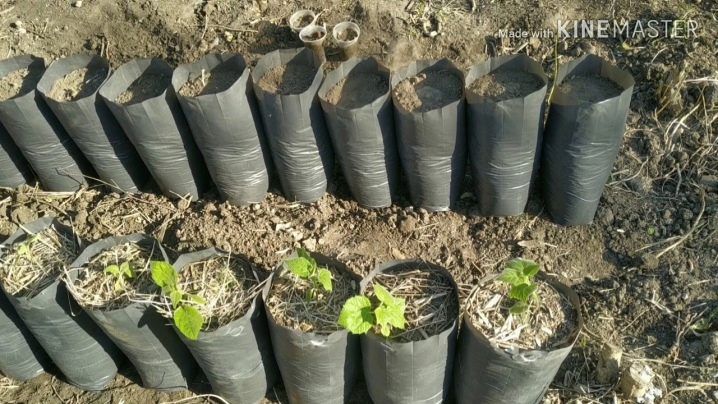
- Reproduction by shoots. This is possible only if the tree forms it, which does not always happen. The shoots are dug up in the spring, carefully separating them from the tree with a sharp shovel. The seedling is treated with garden pitch and immediately planted in the place designated for it.
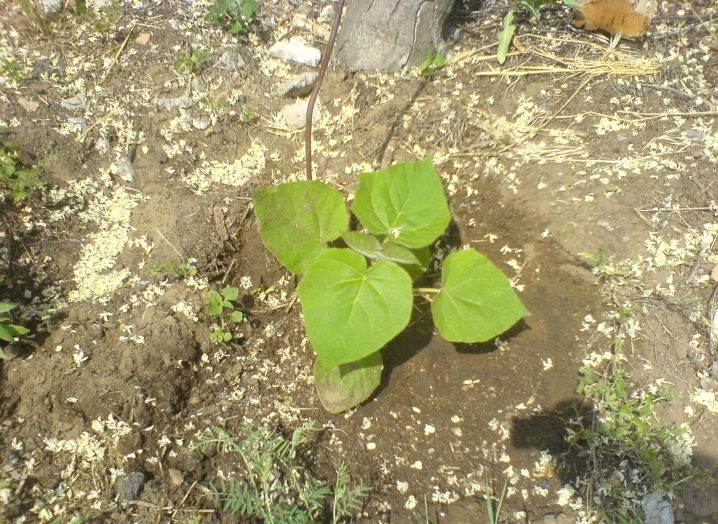



































































The comment was sent successfully.